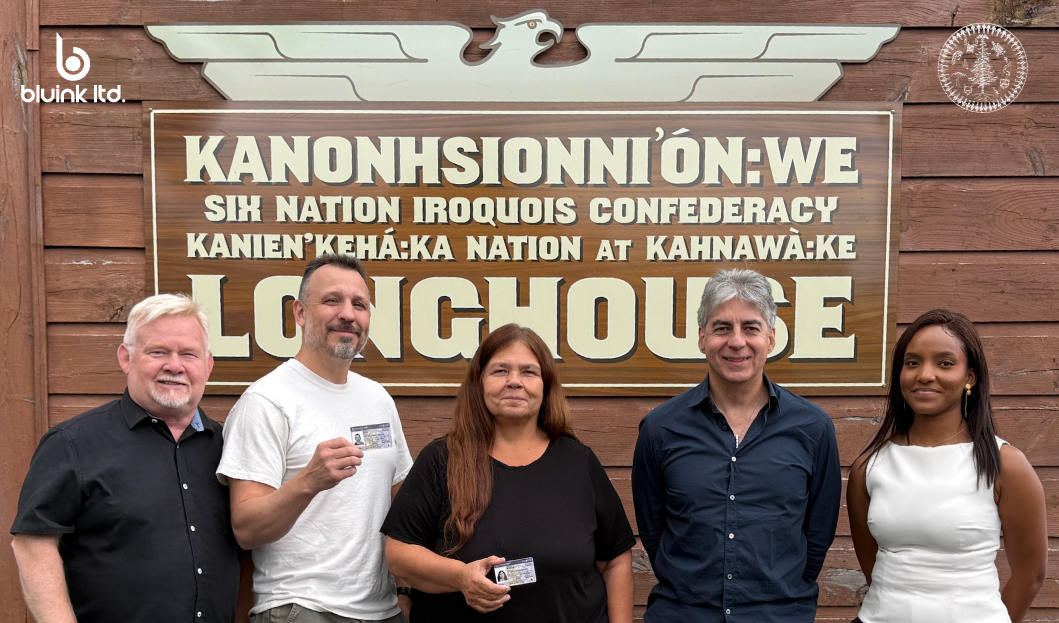
A few years ago, an equipment reseller asked us if we could help the Mohawk Confederacy, or Haudenosaunee Nation to be exact, with the design and printing of a new, secure citizenship card.
The request sounded interesting and in our zone of competency. Plus, we could deliver a digital ID version, supported by our existing eID-Me app.
The words of Jensen Huang, CEO of NVIDIA, haunt me lately… “How hard could it be?” This project turned into exactly that case.
Initially, the project scope was to replace the existing “Red Card” — a cardboard card with glued photo — that has been used for over sixty years for cross-border travel by First Nation members, whose territory spans the US-Canada border. The biggest complaint was that the Red Card was not machine readable, and border agents had to type in long, complicated names by hand.
We thought the solution was simple. We’ll just design a standard AAMVA ID Card with a 2D barcode (PDF417) for machine readability. The target quickly changed to producing an ICAO-compliant TD1-sized Machine Readable Official Travel Document (MROTD). This added the requirement for an MRZ on the back of the card, encoding the issuer and card information into three text strings. With that, the design was complete.
Next came card printing and testing.“Retransfer printed” cards are not acceptable at the border, even though they were replacing the paper version. This led to our connection with OVD Kinegram, a secure card blank producer who responded to my outreach and who currently supplies secure ID solutions to the Canadian government.
Thus began a new journey developing a secure card blank, with a custom design KINEGRAM technology that is laser engraved for card personalization. Bluink worked with the Mohawk Confederacy representatives on the card design and graphics that capture Mohawk symbols and history, while OVD Kinegram translated the design into a new ID card with state of the art security.
After several months of developing the card printer software, I am pleased to say we are almost finished with Phase 1 of the project. We printed the first ID cards at Kahnawà:ke last week. After a few changes, we will turn over the process to the People of the Longhouse, as it should be.
A special thanks to all those who participated in this successful ID card development process, including Thomas Deer and Lynne Norton from Kahnawà:ke; Larry Hamid, Alex Longval and Awa Djibril Sow from Bluink; our friends at OVD Kinegram, John Peters, Hendrik and Thomas; and Nadia Reid from ID SECURE.
We learned a lot and are ready to help other First Nations who are looking to develop a secure First Nations identity card and digital ID.
Niawen’kó:wa.